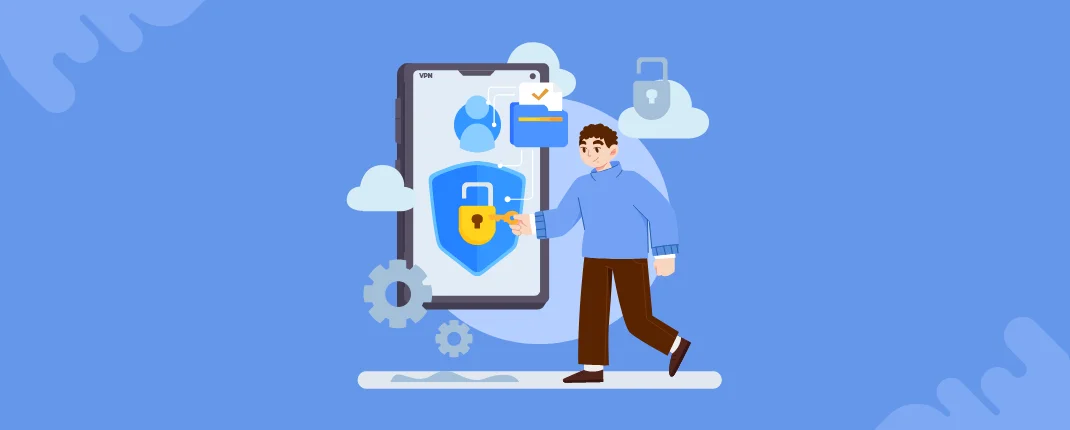
Himanshi Arora
5 min read
Introduction
In the rapidly changing environment of mobile app development ,where innovation is the driving force and user experience is paramount, mobile app security has risen brighter than ever. From banking and shopping to communication and entertainment, mobile apps are seamlessly integrated into every aspect of modern life. But the growing dependence on these applications brings with it an urgent need to ensure their security, a concern not only for developers, but also for users, businesses and regulators.
In this article, we delve into the multifaceted dimension of mobile app security and explore not only its importance, but also best practices that enable developers to create sustainable and secure digital solutions. From understanding the nature of mobile data security to identifying potential threats, we embark on a journey that explores the complex world of protecting sensitive user data and maintaining application functionality.
What is Mobile Application Security?

Mobile application security is not just another stage of development - it is the foundation on which trust is built between users and the digital solutions they support. This security paradigm includes a comprehensive set of practices, protocols, and strategies that together protect mobile applications from vulnerabilities, unauthorized access, data breaches, and potential exploitation. Basically, the goal of mobile application security is to ensure the confidentiality and integrity of user data and the smooth functionality of the application on different devices and operating systems.
Threats to Mobile App Security

As mobile applications become increasingly complex, so do the threats that characterize the digital landscape, creating a shadow of uncertainty for users and developers alike. The evolving threat landscape presents a number of challenges that, if left unchecked, can undermine an application's foundation and undermine user trust.
-
Data leakage
Mishandling of sensitive data due to insufficient encryption or improper data storage practices can lead to unwanted data leaks that can expose user data to malicious actors.
-
Unauthorized access
Malicious actors can exploit vulnerabilities in the application's code base to gain unauthorized access, compromise user data, and disrupt application functionality, which undermines user trust.
-
Malware and viruses
Injecting malicious code into applications can lead to the rapid spread of malware and viruses, which can cause widespread damage to users as well as the application's reputation.
-
Insecure APIs
Weaknesses in APIs used to connect applications to external services can open the way to data breaches and unauthorized access, and act as a gateway for cybercriminals to access and manipulate sensitive data.
-
Man-in-the-Middle Attacks
Under the guise of encrypted communications, cybercriminals attempt to eavesdrop and manipulate communications between applications and servers, potentially accessing sensitive information and undermining user trust.
7 Ways to Protect Your Mobile App

-
Robust code review and testing
Conduct thorough code review and testing during the development process to identify and fix vulnerabilities. Conduct regular security assessments, penetration testing, and code analysis to ensure that your application's code base is resilient to potential threats.
-
Implement secure authentication
Implement strong, multi-factor authentication methods to protect user accounts. This may include biometric verification, two-factor authentication (2FA), or OAuth-based verification to streamline usage and prevent unauthorized access.
-
Encryption is key
Use encryption techniques to protect sensitive data both in transit and in storage. Use industry standard encryption protocols such as SSL/TLS for communication and implement strong encryption algorithms for data at rest.
-
Regular updates and patch management
Stay on top of security updates to your app's frameworks, libraries, and underlying components. Timely updates ensure that known vulnerabilities are patched, reducing the risk of exploitation by malicious actors.
-
Access Control and Least Privilege
Implement a granular access control system that limits user access to roles and privileges. The principle of least privilege is implemented, allowing users to access only the functions and information necessary for their role.
-
Thorough testing of third-party components
Carefully evaluate third-party libraries, SDKs and plugins before integrating them into your application. Ensure that these components adhere to strict security standards and have timely updates to address vulnerabilities.
-
User education and privacy awareness
Educate users about the importance of security by providing guidance on how to create strong passwords, update devices, and practice secure apps. Transparency of data collection and use in an application can increase user trust.
Mobile Application Security - Best Practices

-
Code review and testing
Regularly review and test application code for vulnerabilities and ensure that security measures are an integral part of the development process.
-
Enhance authentication security
Integrate robust authentication techniques like multi-factor authentication to deter unauthorized entry.
-
Encryption
Encrypts sensitive data both in transit and at rest to prevent potential data breaches.
-
Regular Updates
Fix known vulnerabilities by keeping the app and the framework behind it updated.
-
Access control
Limit user access to roles and privileges to reduce the risk of data exposure.
-
Application Testing
Thoroughly review third-party libraries and components for security reasons before integrating them into your application.
-
Educate users
Educate users about the importance of app security and encourage them to use strong passwords and keep their devices updated.
-
Penetration Testing
Conduct regular penetration testing to identify security holes and fix them before they can be exploited.
Protect Your App with Whiten App Solutions
When it comes to comprehensive mobile app security, partnering with a trusted mobile app development company like Whiten App Solutions can be a game changer. With their expertise in application development and security, they can guide you through the complex process of creating a secure application from the ground up.
Their commitment to integrating strong security measures ensures that your app not only provides an exceptional user experience, but also protects user data and privacy.
Conclusion
Mobile app security is not a luxury in today's digital environment, but a necessity. The vulnerabilities and threats of mobile applications emphasize the importance of adopting best practices to reduce risk and ensure a secure user experience. By understanding the importance of mobile phone security and implementing proactive measures, developers and development companies can contribute to a safer digital environment and create innovative and reliable apps that users can trust.

Frequently Asked Questions
-
Why is mobile application security important?
Mobile application security is crucial to protect user data and privacy. It prevents unauthorized access, data breaches, and potential vulnerabilities that could compromise user trust, damage your app's reputation, and lead to legal consequences.
-
How can I secure my mobile app against data breaches?
To secure your app against data breaches, implement strong encryption for both data in transit and data at rest. Use secure authentication methods like multi-factor authentication to prevent unauthorized access to user accounts.
-
What are the most common mobile app security threats?
Common mobile app security threats include data leakage due to weak encryption, unauthorized access through vulnerabilities, malware and viruses injected into apps, insecure APIs exposing data, and man-in-the-middle attacks intercepting communication.
-
How do I ensure security during the app development process?
Ensure security by conducting regular code reviews, penetration testing, and security assessments. Integrate security practices into the development lifecycle, keep third-party components updated, and follow secure coding guidelines.
-
How can Whiten App Solutions enhance mobile app security?
Whiten App Solutions, as a reputable mobile app development company , employs industry best practices to develop secure apps from the ground up. Their expertise in secure coding, thorough testing, and adherence to security standards can fortify your app's security measures.

